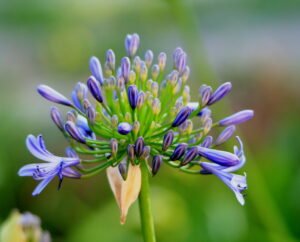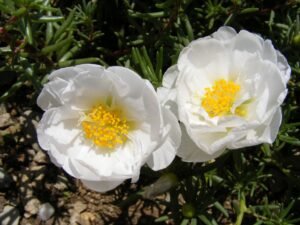Norfolk Island Pine : How To Plant, Grow, And Care

Photo by James St. John on flickr license
The Norfolk Island Pine (Araucaria heterophylla) is a beautiful and unique evergreen tree that is native to Norfolk Island, a small island located in the South Pacific. This tree has gained popularity as a houseplant and is commonly grown for its attractive foliage and easy care requirements.
Not only does the Norfolk Island Pine look beautiful on its own, but it also serves as an excellent backdrop for other indoor plants. Its rich green foliage provides a lush and tropical feel, creating a serene and inviting atmosphere in any room. Whether you place it in a living room, office, or patio, this tree is sure to be a focal point and conversation starter. This article explains in detail how to plant, grow, and care for Norfolk Island Pine tree.
Facts About Norfolk Island Pine
The Norfolk Island Pine was first discovered in 1774 by Captain James Cook during his second voyage to the Pacific. He named the tree after Norfolk Island, where he first encountered it. The scientific name, Araucaria heterophylla, was given by the botanist Johann Reinhold Forster, who accompanied Cook on his voyage.
The Norfolk Island Pine was first introduced to Europe in the late 18th century. It quickly gained popularity among botanists and horticulturists for its unique beauty and ability to adapt to different climates. The tree’s symmetrical growth pattern and attractive foliage made it a sought-after addition to gardens and parks.
By the early 19th century, Norfolk Island Pines had made their way to various parts of the world, including the United States, South Africa, and New Zealand. They were primarily cultivated as ornamental trees, prized for their ability to thrive in coastal areas and their resistance to strong winds.
The Norfolk Island Pine has gained symbolic and cultural significance in various regions where it has been introduced. In Norfolk Island itself, the tree is considered a national symbol and is prominently featured on the island’s coat of arms.
In some cultures, the Norfolk Island Pine is associated with longevity and resilience. Its ability to withstand harsh coastal conditions and its long lifespan have made it a symbol of strength and endurance. The tree is often planted in memorial gardens or used as a living tribute to honor loved ones.
Aside from its aesthetic appeal, the Norfolk Island Pine offers several practical benefits. Its dense foliage provides shade and privacy, making it an excellent choice for landscaping and windbreaks. The tree’s root system also helps prevent soil erosion, making it valuable in coastal areas.
Due to its symmetrical growth and attractive appearance, the Norfolk Island Pine is a popular choice for Christmas trees in some regions. Its branches can be adorned with lights and ornaments, creating a festive atmosphere during the holiday season.
FAQs About Norfolk Island Pine
How big does a Norfolk Island Pine get?
The Norfolk Island Pine is a tall, symmetrical tree with a straight trunk and horizontal branches that grow in a tiered pattern. It can reach heights of up to 200 feet (60 meters) in its natural habitat, However, when grown as a houseplant or in a container, it usually grows to a more manageable height of around 10-20 feet (3-6 meters).
Is Norfolk Island Pine a Sun or Shade Plant?
While the Norfolk Island Pine can tolerate some direct sunlight, it is generally best to avoid placing it in a location where it will receive intense, direct sunlight for extended periods. Direct sunlight can cause the foliage to burn and turn brown, leading to irreversible damage to the plant. Instead, opt for a spot near a north or east-facing window where the plant can receive bright, indirect light.
Can I grow a Norfolk Island Pine outdoors?
While Norfolk Island Pines are typically grown as houseplants, they can be grown outdoors in certain regions. These trees thrive in tropical and subtropical climates, such as those found in USDA hardiness zones 10 to 11. If you live in a suitable climate, you can plant your Norfolk Island Pine outdoors in a protected area with well-draining soil. Be sure to provide the tree with adequate sunlight and protection from strong winds.
Is Norfolk Island Pine Toxic to Pets?
While Norfolk Island Pine is not considered highly toxic to pets, it can still cause some health issues if ingested. The plant contains a substance called araucariin, which can cause gastrointestinal upset in animals if consumed in large quantities.
Right Location For Norfolk Island Pine
When it comes to planting a Norfolk Island Pine, choosing the right location is crucial for its growth and overall health. Here are a few factors to consider:
Indoor or Outdoor
First, decide whether you want to grow your Norfolk Island Pine indoors or outdoors. While it can thrive in both environments, there are a few differences to keep in mind.
If you choose to grow your Norfolk Island Pine indoors, make sure to place it in a well-lit area away from direct sunlight. A north-facing window is usually the best spot, as it provides bright, indirect light. Avoid placing the tree near drafts or heating vents, as it prefers a stable temperature.
If you decide to plant your Norfolk Island Pine outdoors, select a location that offers partial shade. The tree can tolerate full sun but may require more frequent watering in hot, sunny conditions. Ensure the soil is well-draining to prevent waterlogged roots.
Climate
The Norfolk Island Pine is native to the South Pacific, so it thrives in warm, tropical climates. However, it can also adapt to cooler regions with proper care. If you live in a colder climate, be prepared to protect your tree from frost and cold winds during the winter months.
Space
Consider the size of your Norfolk Island Pine when choosing a location. These trees can grow up to 200 feet tall in their natural habitat, although they typically reach a height of 10-20 feet when grown indoors or in containers. Make sure you have enough space for the tree to grow and spread its branches comfortably.
How To Propagate Norfolk Island Pine
If you’re interested in propagating your Norfolk Island Pine, you can do so through seed germination or stem cuttings.
Seed Germination
To propagate your Norfolk Island Pine from seeds, collect mature cones from the tree and allow them to dry out. Once the cones open, collect the seeds and sow them in a well-draining potting mix. Place the pot in a warm, well-lit area and make sure the soil stays moist. The seeds should germinate within a few weeks.
Stem Cuttings
Propagation through stem cuttings is also possible. Take a 4-6 inch cutting from a healthy Norfolk Island Pine and remove the lower leaves. Dip the cut end in rooting hormone and plant it in a pot with moist potting mix. Keep the soil moist and place the pot in a light, warm area. The cutting should develop roots within a few months.
How To Plant Norfolk Island Pine
Now that you’ve chosen the perfect location, it’s time to plant your Norfolk Island Pine. Follow these steps to ensure a successful planting:
Selecting the Right Pot
If you’re growing your Norfolk Island Pine indoors or in a container, choose a pot that is slightly larger than the root ball of the plant. Make sure the pot has drainage holes to prevent waterlogging. Using a well-draining potting mix is also essential for the tree’s health.
Preparing the Soil
If you’re planting your Norfolk Island Pine outdoors, prepare the soil by loosening it with a garden fork or tiller. Mix in some organic matter, such as compost or peat moss, to improve drainage and provide essential nutrients.
Planting the Tree
Gently remove the Norfolk Island Pine from its nursery pot and place it in the prepared hole. Verify that the root ball’s top is either level with the soil’s surface or slightly above it. Backfill the hole with soil, firming it gently around the roots. Water the tree thoroughly after planting.
How To Care For Norfolk Island Pine
Proper care is essential for the health and longevity of your Norfolk Island Pine. You can take better care of your tree by following these tips:
Watering
One of the most important aspects of Norfolk Island Pine care is watering. These trees prefer slightly moist soil, so water them regularly but avoid overwatering. Between waterings, let the top inch of soil dry off. During the winter months, reduce watering frequency as the tree goes into a dormant period.
Fertilizing
When it comes to selecting the best fertilizer for your Norfolk Island Pine, it’s important to consider its specific nutritional needs. Look for a well-balanced, water-soluble fertilizer that contains equal amounts of nitrogen (N), phosphorus (P), and potassium (K). These three macronutrients are essential for healthy plant growth. For Norfolk Island Pines, a balanced NPK ratio like 10-10-10 or 20-20-20 is generally recommended.
Additionally, it’s beneficial to choose a fertilizer that includes micronutrients such as iron, manganese, and zinc. These trace elements are necessary for proper plant development and can help prevent nutrient deficiencies.
Avoid using fertilizers that are high in nitrogen, as they can promote excessive foliage growth at the expense of root development. Slow-release fertilizers are also not recommended for Norfolk Island Pine, as they may release nutrients too slowly or not at all, leading to nutrient deficiencies.
The best time to fertilize your Norfolk Island Pine is during the active growing season, which typically occurs from spring to early fall. During this period, the tree is actively producing new growth and will benefit the most from the added nutrients.
It’s important to note that Norfolk Island Pine requires a period of rest during the winter months. Avoid fertilizing during this time, as the tree’s growth slows down, and it may not be able to absorb the nutrients effectively. Resume fertilization in early spring when the tree starts showing signs of new growth.
Pruning
Pruning is not necessary for the Norfolk Island Pine, but you can trim back any dead or damaged branches to maintain its shape. Avoid heavy pruning, as it can stress the tree.
Pest and Disease Control
In general, Norfolk Island pines are resistant to illnesses and pests. However, they can occasionally be affected by spider mites or scale insects. Regularly inspect your tree for any signs of infestation, such as webbing or sticky residue. If necessary, treat the affected areas with an appropriate insecticide or consult a professional for assistance.
Temperature and Humidity
The ideal temperature range for Norfolk Island pines is 60–70°F (15–21°C), while they can withstand slightly higher or lower temperatures. They also thrive in humid environments. If you’re growing your tree indoors, misting the foliage regularly or using a humidifier can help maintain the required humidity levels.
With its striking appearance and relatively low maintenance requirements, the Norfolk Island Pine is an excellent choice for both indoor and outdoor gardening. By following the tips and guidelines provided in this article, you can successfully plant, grow, and care for your Norfolk Island Pine. Enjoy the beauty and elegance this tree brings to your space!





